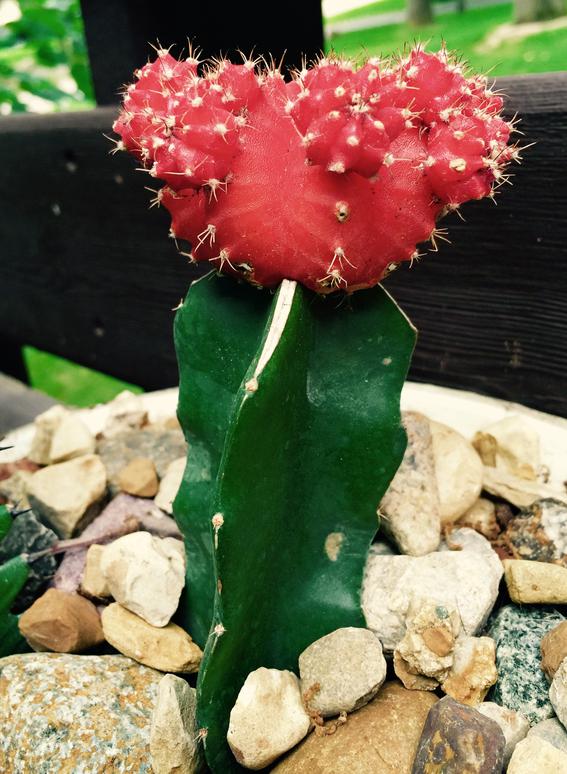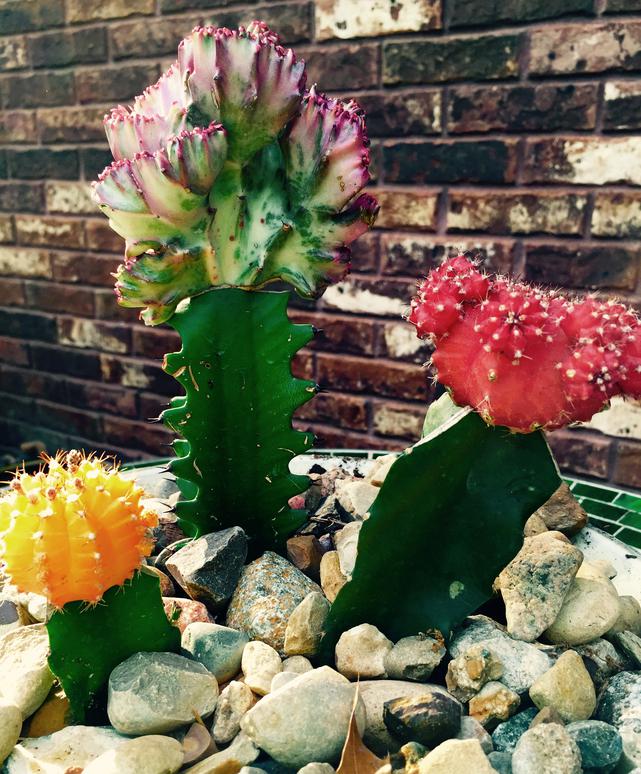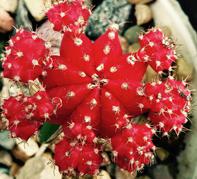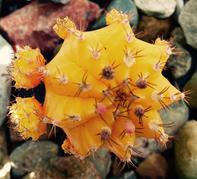 | ||||
How To Care for a Moon Cactus
SPO VIRTUAL CLASSROOMS
- Light - The Moon Cactus prefers bright indirect sunlight. Full sun, for long periods of time, can harm the plant. If you are moving it from indoors to outdoors, make sure to increase exposure to sunlight gradually, to slowly acclimate the plant to higher light levels and prevent burning.
- Safety - Although the bottom, green portion of the plant is not particularly spiny, the moon can be. The Hylocereus used for the base, is a plant produces edible fruits. But the white sap that seeps out when the plant is cut, can irritate skin and eyes. So it's best to place this plant out of the reach of small children.
Moon Cactus with red top: See how the bottom, green portion of the plant shows healed, diagonal cuts, from when it was grafted to the red top.
The Moon Cactus is low-maintenance and very easy to care for if not over-watered. Here are the basics:
- Temperature - The Moon Cacti will thrive at average indoor temperatures, but require a minimum of 48F (9C). Outdoors they can be grown year-round in USDA growing zones 10 and 11, or during warmer months in temperate zones.
PAGE 2 < Back to Page 1
To learn about grafting ...
- Watering - Let the plant dry between waterings. Use a moisture meter, or even a pencil or wooden skewer to test the moisture level of the soil. If using a wooden implement to test the moisture level, stick it deep into the soil, then remove and check to see if the skewer is moist or has moist soil sticking to it. If moisture is detected, wait to water.
- Fertilizing - The Moon Cactus only needs to be fertilized when it is actively growing, April - September. Any standard plant fertilizer can be used.
- Repotting - Use cactus soil or a 50/50 combination of regular potting mix and sand. Most cacti prefer to be crowded, so choose a container that is not too large and that has drainage holes. Plant shallowly, just covering the roots. Then press down the soil to anchor the plant and prevent it from leaning or tipping.
Page last updated: 6/2015
Moon Cactus red and yellow tops showing offsets; what looks like tiny baby cacti, and can be cut-off and used for propagation.
Two Moon Cacti planted in a group arrangement with a Coral Cactus.
How To Graft Cacti
Fascinating video on how grafting is done!
Video from University of Nebraska Cooperative Extension
How To Graft Cacti
Fascinating video on how grafting is done!
Video from University of Nebraska Cooperative Extension





